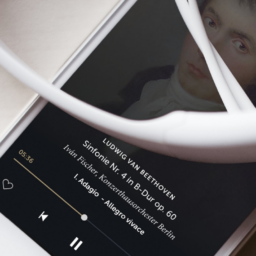A reflection on key trends in music, tech, and user interfaces.
Soundcloud is saved, for now. On top of whatever strategic decisions they make to be able to attract follow-up investments, they face the difficult task of preserving their user community’s trust and winning back part of the trust they already lost. Tumultuous times are ahead, which will be frustrating, but also very exciting as it creates opportunity for new innovation and startups to claim their piece of the pie.
Underserved early adopter: the Myspace moment
Back in April I wrote about the fact that music is about to experience another Myspace moment. What I mean by that is that when Myspace hit decline, as it lost its community’s trust, new platforms got a chance as early adopters bailed and moved on. Musicians started building up audiences on Facebook and Twitter, and sharing their music on Soundcloud.
Now we see another Myspace moment: Spotify is focusing on mass audiences, and the prime early adopter platform has a distressed community due to the continuous struggles that Soundcloud has faced over the last years.
This creates opportunities for concepts such as:
- Connecting groups of music listeners based on music taste or curiosity:
- Soundcloud‘s struggling with this due to its failure to keep its search & tagging feature useful as the amount of content grew over the years, and they killed their groups feature;
- Spotify has deprioritized user-created playlists and removed messaging functionality.
- TheWaveVR could be one of the startups to fill this gap.
- Collaboration and feedback:
- If people are leaving Soundcloud, they need to take that somewhere else.
- Audiu, which was one of the hottest startups at Sonar+D this year, could play a big role here.
- Promo services for people who need an easy way to share music to journalists, labels, etc.
You could come up with a lot more ideas and find startups striving to make a meaningful impact there.
A third device in our midst: the Voice User Interface (VUI)
I’ve recently been playing around with an Amazon Alexa I ordered. At first I was skeptical and thought it would always feel awkward, but you get used to it fast and the convenience of a voice-controlled device in the living room (and other rooms) is bigger than I expected. I thought all those times you have to grab your mobile phone, or look something up on the computer, were minor and infrequent inconveniences. Now, the VUI has embedded itself into my life and all kinds of small habits, patterns and every day rituals.
VUIs are going to be the third device: first came PCs (plus laptops), then came smartphones (plus tablets), and now we’re going to get a third addition through voice-controlled devices like Amazon Alexa, Google Home, Apple‘s Siri-based devices, devices in the car, etc. Perhaps this is why Tesla is in talks to do a music streaming service: music is the way into these spaces.
So what happens to the way we browse and explore music when we take the visual user interface away? What place does the smartphone get? What place does the laptop get? And what behaviour extends to our smart speakers?
What happens in AI is very important for VUI apps, but also for chatbots.
Conversational interfaces: the rise of messaging apps
Messaging has frequently been called the next major platform. It enables chatbots, which are apps that live on conversational platforms (this is a trend that’s also strengthened by VUIs). Some of the biggest social platforms to rise up over the last decade were primarily messaging apps, such as Snapchat, Whatsapp, Telegram, and Kik.
The next step of the social web is messaging, but smarter than the AIM, ICQ, and chatroom phase of social. Facebook is positioning Messenger in such a way that it can live as a platform on its own.
Read Music Ally‘s write-up of the chatbot panel I moderated at Midem.
Short-form video
I urge people to try out Instagram Stories and figure out what it takes to make good content for it. Short-form video content is so important in an age of short attention spans. Some of the hottest platforms to emerge among teens in the last years have been Snapchat and Musically, both limiting the time-length of videos being shared on the platforms. It’s fun, fast, and requires low commitment: making users share and explore more content.
I firmly believe this is going to change the way we write songs and structure them. We’ve already seen how the streaming playlist economy made tracks shorter, with people moving the vocals to the start of the track in order to make skips less likely. In the next years, the video story format is going to strongly impact music.
Instagram is another platform that may fare very well from the decline of user trust in Soundcloud‘s community.
I’ll be discussing more of these trends in my newsletter, which goes out every week on Monday. Sign up to stay in the loop.






